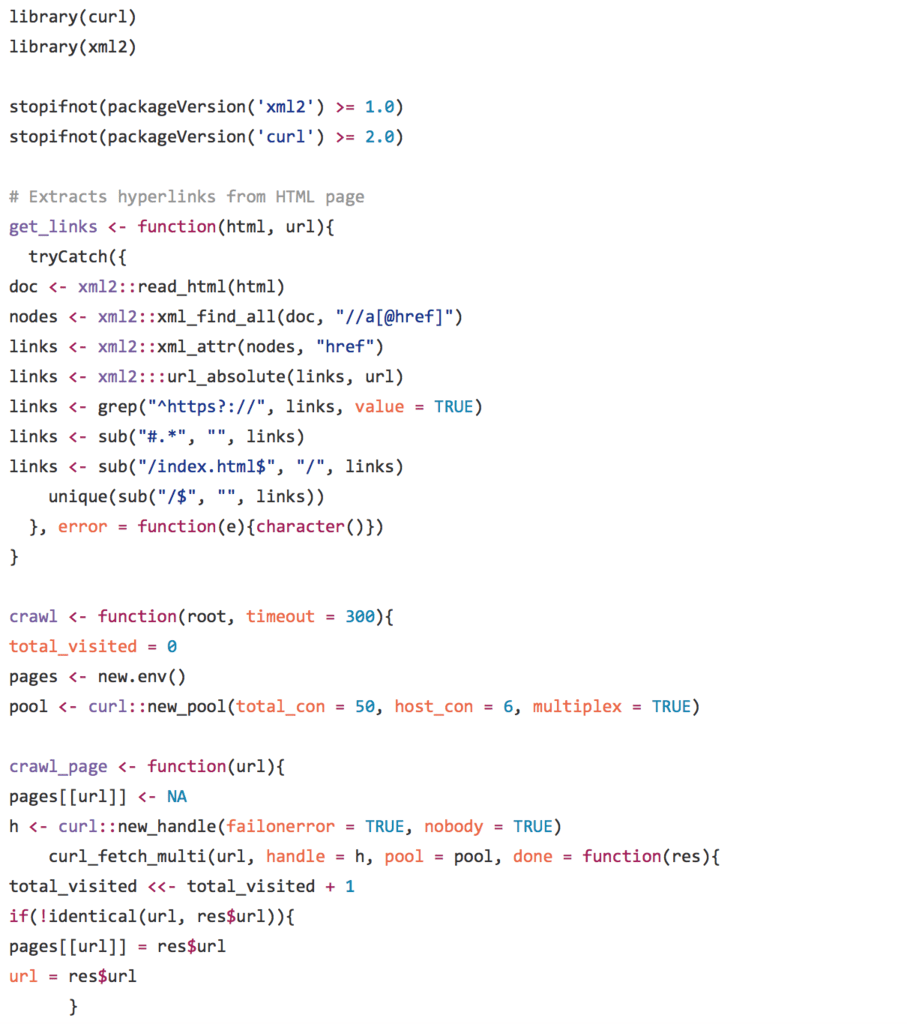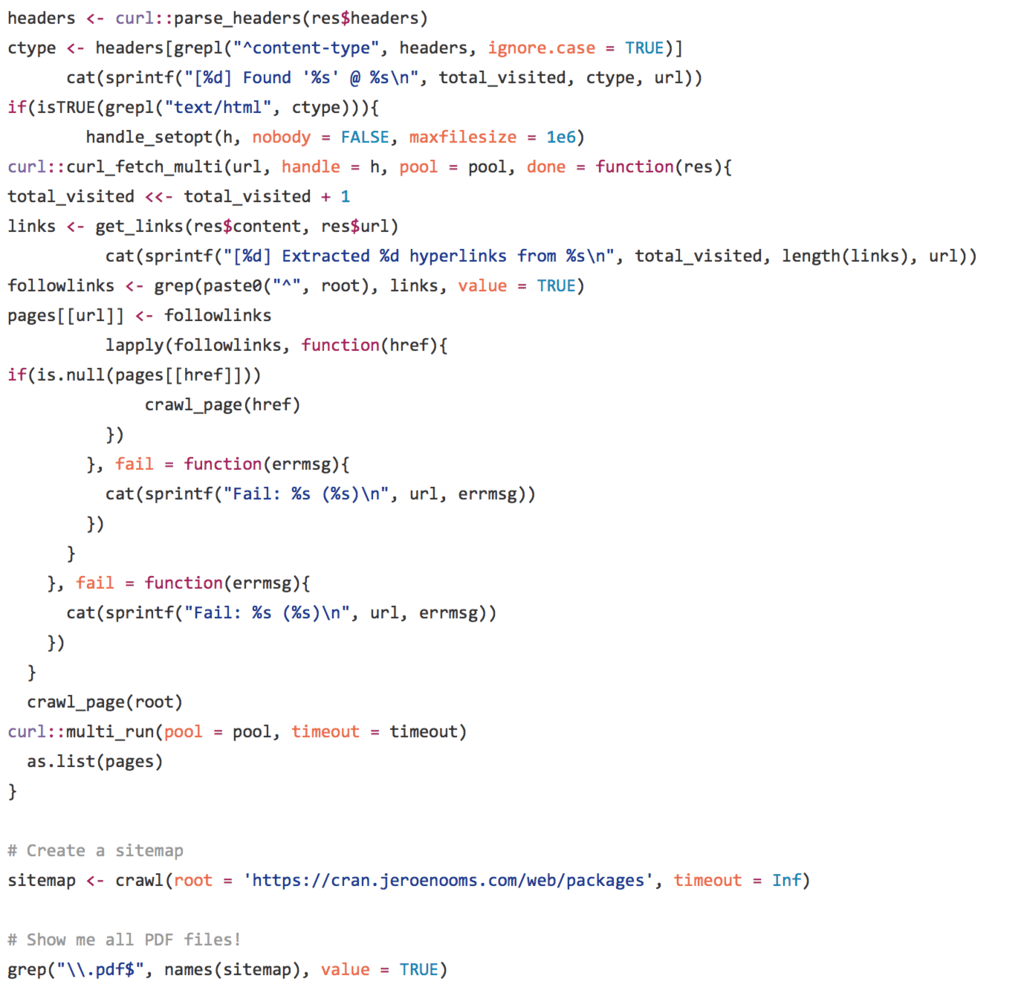Try the new non-blocking http API in curl 2.1:
R sitemap example, Jeroen Ooms, 2016
This code demonstrates the new multi-request features in curl 2.0. It creates an index of all files on a web server with a given prefix by recursively following hyperlinks that appear in HTML pages.
For each URL, we first perform a HTTP HEAD (via curlopt_nobody) to retrieve the content-type header of the URL. If the server returns ‘text/html’, then we perform a subsequent request which downloads the page to look for hyperlinks.
The network is stored in an environment like this: env[url] = (vector of links)
WARNING: Don’t target small servers, you might accidentally take them down and get banned for DOS. Hits up to 300req/sec on my home wifi.


.
To read original article, click here. For more information on web scraping, click here.
DSC Resources
- Career: Training | Books | Cheat Sheet | Apprenticeship | Certification | Salary Surveys | Jobs
- Knowledge: Research | Competitions | Webinars | Our Book | Members Only | Search DSC
- Buzz: Business News | Announcements | Events | RSS Feeds
- Misc: Top Links | Code Snippets | External Resources | Best Blogs | Subscribe | For Bloggers
Additional Reading
- What statisticians think about data scientists
- Data Science Compared to 16 Analytic Disciplines
- 10 types of data scientists
- 91 job interview questions for data scientists
- 50 Questions to Test True Data Science Knowledge
- 24 Uses of Statistical Modeling
- 21 data science systems used by Amazon to operate its business
- Top 20 Big Data Experts to Follow (Includes Scoring Algorithm)
- 5 Data Science Leaders Share their Predictions for 2016 and Beyond
- 50 Articles about Hadoop and Related Topics
- 10 Modern Statistical Concepts Discovered by Data Scientists
- Top data science keywords on DSC
- 4 easy steps to becoming a data scientist
- 22 tips for better data science
- How to detect spurious correlations, and how to find the real ones
- 17 short tutorials all data scientists should read (and practice)
- High versus low-level data science
Follow us on Twitter: @DataScienceCtrl | @AnalyticBridge
